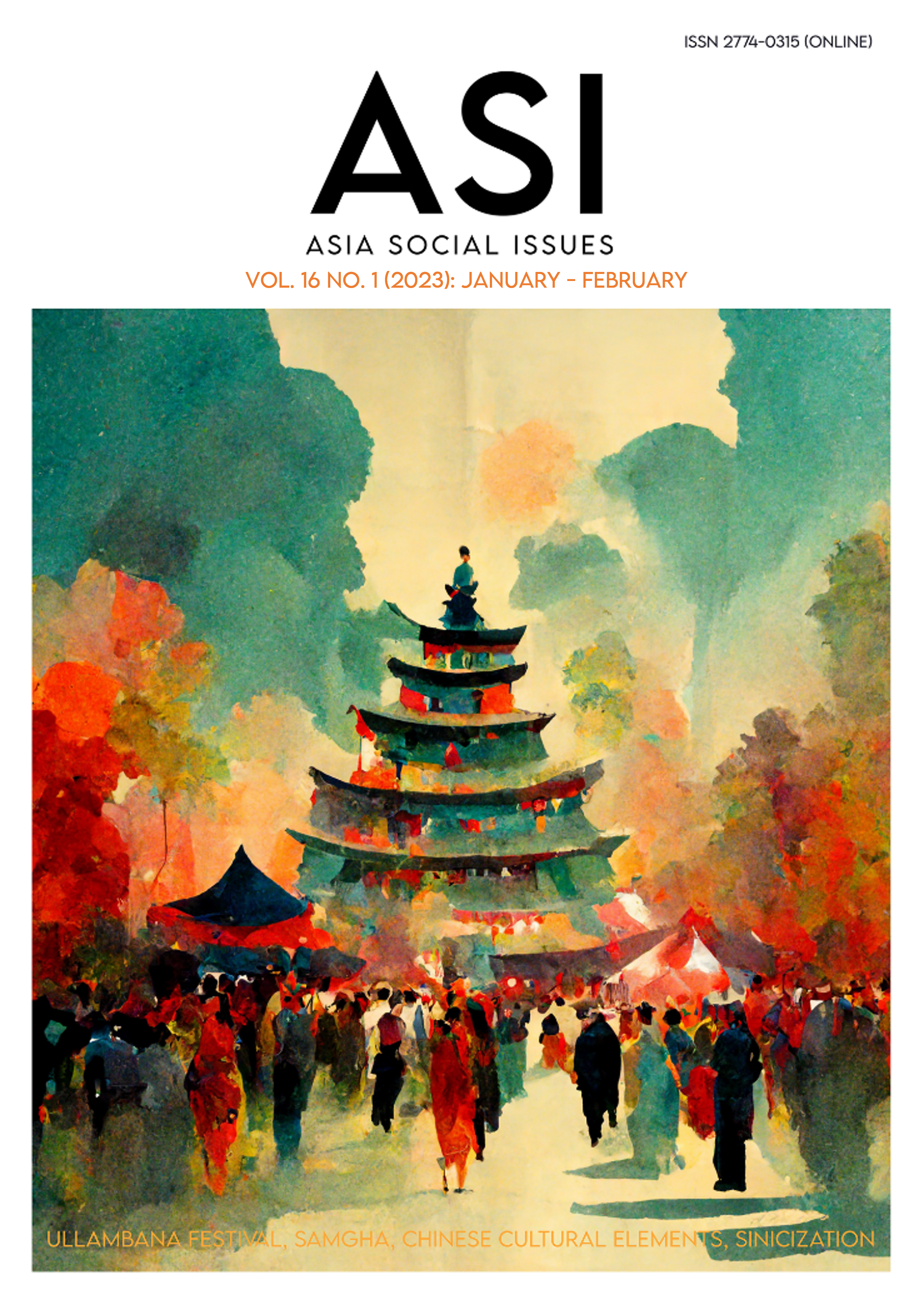The Chinese Cultural Elements of the Ullambana Festival
Main Article Content
Abstract
Buddhism was disseminated from India to China during the Han Dynasty (202 B.C.-220 C.E.) and incorporated local Chinese cultures. It emerged gradually as a specific cultural phenomenon with Chinese features. According to Li Li’an, such a phenomenon could be considered a miniature of all the foreign cultures’ destiny in China, too (Li, 2006). The Ullambana Festival of Buddhism experienced a long process of change within Buddhism itself. The Ullambana Service of Chinese Buddhism is a glittering example of this historically peerless amalgamation of two of the world’s most remarkable ancient civilizations. Thus, this paper attempts to investigate the Chinese cultural elements of the Ullambana Festival during its transmission in China to explore the localization of Buddhism in China further.
Article Details

This work is licensed under a Creative Commons Attribution-NonCommercial-NoDerivatives 4.0 International License.
Copyright: CC BY-NC-ND 4.0
References
Akamatsu, K. (2000). The Research on Ullambana. Research Bulletin of Takamatsu University, 1(1), 1-11.
Alone, Y. S. (2020). Buddhist theory of representation (pp. 311-330). In Mahalakshmi, R. (Ed.). Art and history: Texts, contexts and visual representations in ancient and early medieval India. London, UK: Bloomsbury.
Bkdde, D. (1975). Festivals in classical china. Princeton, US: Princeton University Press.
De Groot, J. J. M. (1886). Les Fêtes annuellement célebrées à Emoui, Paris, France: E. Leroux.
Fan, J. (2006). The religious origin and development of Ullambana. Journal of Huaqiao University, 4, 23-32.
Granet, M. (1932). Festival and songs of ancient China. London, UK: Routledge.
Kominami, I. (1984). Chūgoku no Shinwa to Monogatari. Ko Shōsetsu Shi no Tenkai. Tokyo, Japan: Iwanami shoten.
Legge, J. (1885). Li Chi. Oxford, UK: Oxford University Press.
Li, L. (2006). The Analysis of Current Situation of the Study of the Belief of Kuan-yin. Beijing: Religious Culture Press.
Logge, J. (1983). The Chinese classics with a translation, critical and exegetical notes, prolegomena, and copious indexes. London, UK: Clarendon Press.
O’Flaherty, D. W. (1980). Karma and rebirth in classical Indian traditions. Berkeley, US: University of California Press.
Rosemonf, Jr. H., & Ames, T. (2009). The Chinese classic of family reverence-A philosophical translation of the Xiaojing. Honolulu, US: University of Hawai’i Press.
Taishō, T. (2002). Fo Shuo Yu-lan-pen Jing. Retrieved from http://tripitaka.cbeta.org/T16n0685_001
Tang, Y. (2000). Buddhism in the Han dynasty of history of Buddhism in Wei, Jin and South-north Dynasties. Shi Jia-zhuang, China: Hebei People Publisher.
Teiser, F. S. (2016). The ghost festival in medieval china. Shanghai, China: Shanghai People’s Publishing House.
Xie, W. (2004). The secularization of Ullambana festival in China. Journal of Zhuzhou Teachers College, 6(2), 24-37.
Xing, Y. (2010). Ullambana festival and ancestor worship of Japanese. Journal of China Academy, 1, 189-197.
Yang, B. (1958). Lun-yu yi-zhu (Confucian analects, the great learning, and the doctrine of the mean). Shanghai, China: Chung Hwa Book Company.


